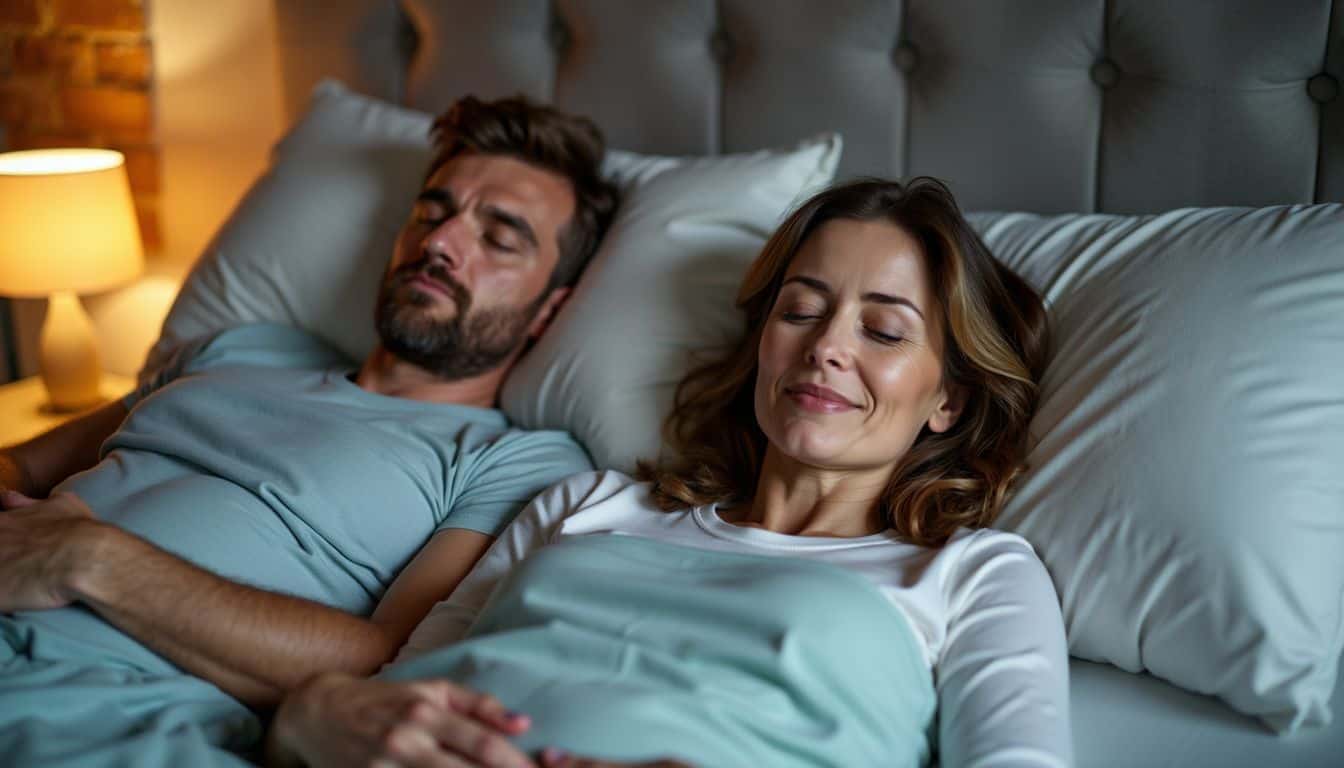Are you tossing and turning all night, struggling with lower back pain? You’re not alone – eight out of ten people face this pesky problem at some point. 3 But don’t worry! We’ve got your back… literally. This article spills the beans on the best way to sleep with lower back pain. Five dreamy tips coming right up!
Key Takeaways
Side sleeping with a pillow between knees helps keep hips, pelvis, and spine aligned, reducing lower back pain.
Back sleeping with a pillow under knees spreads weight evenly and keeps the spine in a neutral position.
Sleeping in a reclined position takes pressure off the spine and may ease breathing issues.
Stomach sleeping should be avoided as it puts stress on the spine and can worsen back pain.
Choose a mattress with good support, pressure relief, and a trial period of 100 nights or more to ensure comfort.
Table of Contents
Exploring Causes of Lower Back Pain

Lower back pain can sneak up on you like a thief in the night. It’s often a mix of factors that gang up on your spine, making sleep a real challenge.
Poor Posture Impact on Lower Back
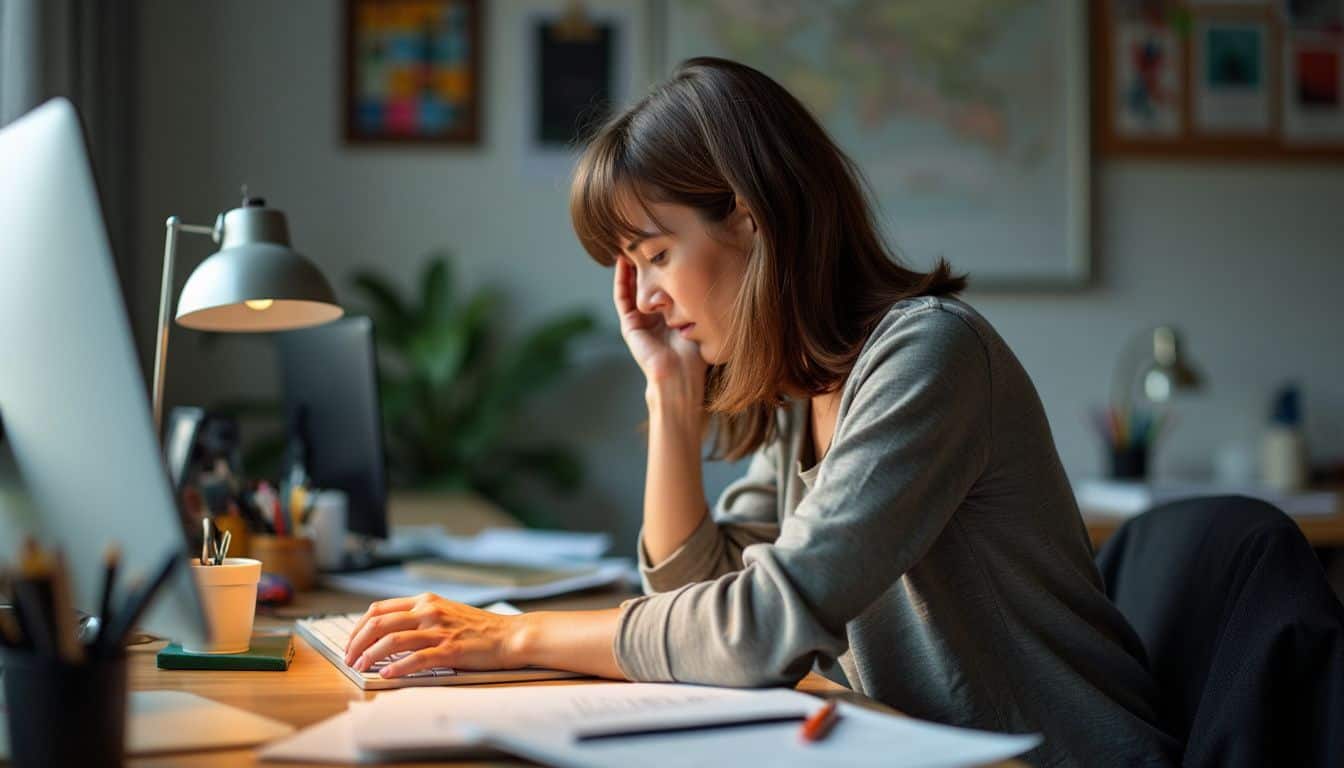 Poor posture is a sneaky culprit behind many lower back woes. It’s like a silent thief, slowly robbing your spine of its natural alignment. Slouching at your desk or standing with a sway-back puts extra stress on your lower back muscles and joints.
Poor posture is a sneaky culprit behind many lower back woes. It’s like a silent thief, slowly robbing your spine of its natural alignment. Slouching at your desk or standing with a sway-back puts extra stress on your lower back muscles and joints.
Over time, this can lead to pain, stiffness, and even injury. I’ve seen firsthand how simple posture tweaks can make a world of difference for my clients. 1
Fixing your posture isn’t just about standing up straight. It’s about retraining your body to maintain proper alignment throughout the day. This might mean adjusting your workspace, using a back traction device, or doing exercises to strengthen your core muscles.
Your posture is the foundation of your spine’s health. Neglect it, and you’re building a house of cards.
The goal? To keep your spine in its natural curves and reduce strain on your lower back.
Muscle Strain as a Trigger for Back Discomfort
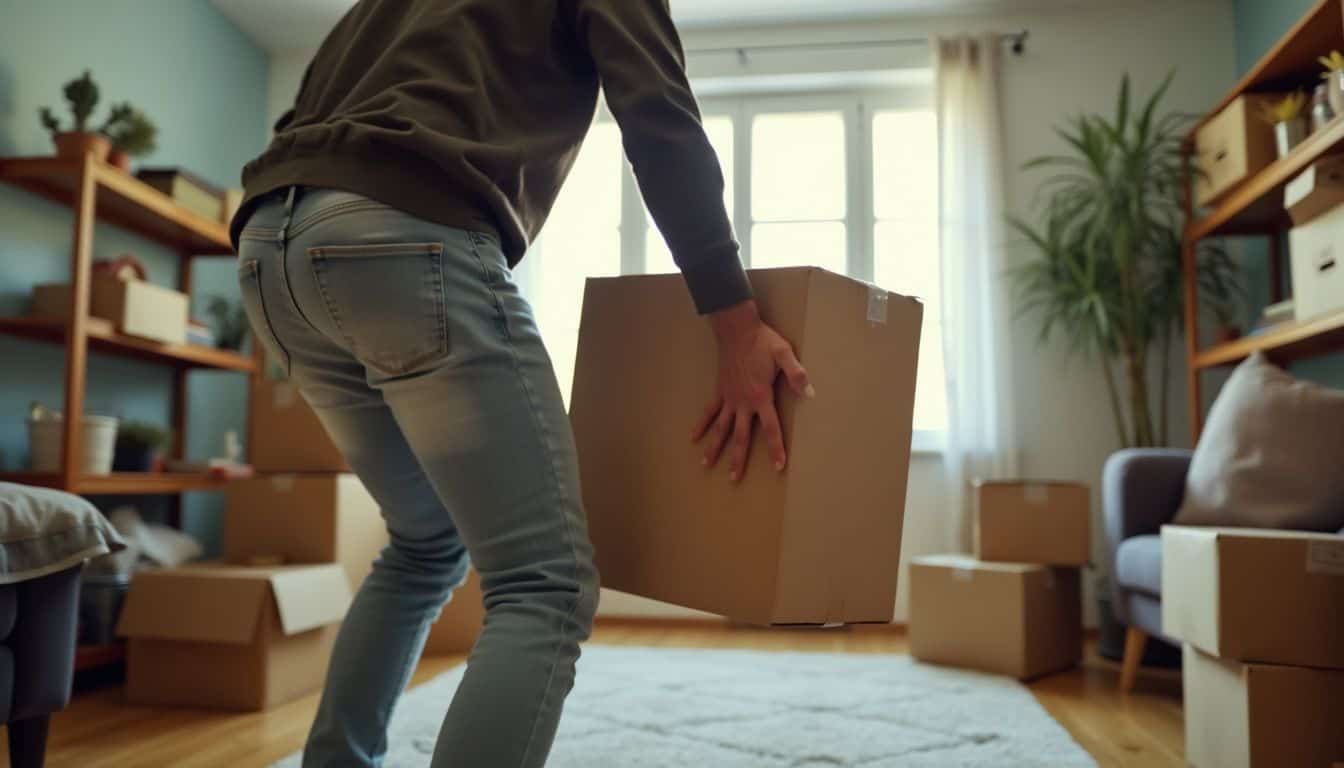 Muscle strains often spark back discomfort. These pesky injuries happen when we overstretch or tear our back muscles. Imagine lifting a heavy box or twisting awkwardly – bam! You might feel a sudden ache or stiffness.
Muscle strains often spark back discomfort. These pesky injuries happen when we overstretch or tear our back muscles. Imagine lifting a heavy box or twisting awkwardly – bam! You might feel a sudden ache or stiffness.
This pain usually stays put and doesn’t spread down your legs. It’s like your back is saying, “Hey, take it easy!” 2
Dealing with muscle strain doesn’t mean you should lie in bed all day. Staying active is key! Light exercises and stretches can help ease the pain. A physical therapist can show you the best moves to do.
They’ll help you build strength and flexibility in your back muscles. This approach beats relying on pain meds alone. Next up, let’s look at how to sleep comfortably with lower back pain.
Effects of Herniated Discs on Lower Back
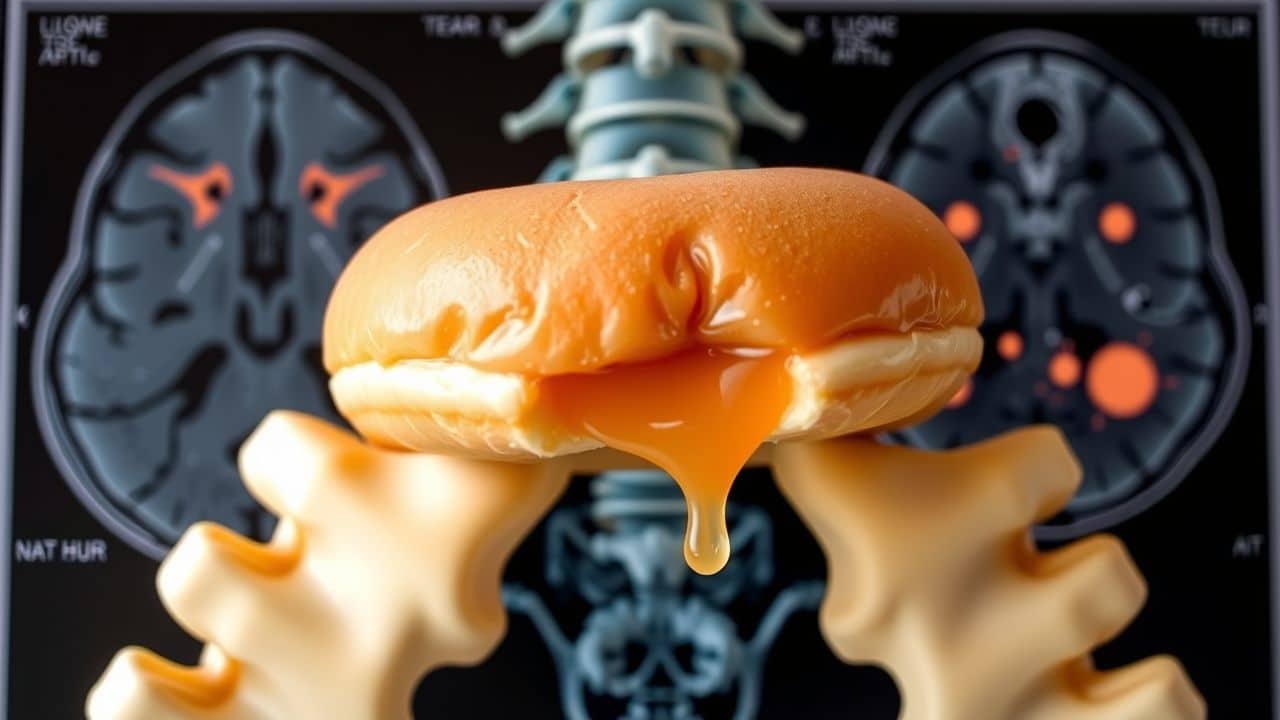
Herniated discs can wreak havoc on your lower back. Picture a jelly donut squished between your spine bones – that’s kinda what happens. The soft center oozes out, pressing on nerves and causing major ouch.
It’s no joke: 86.7% of folks with these disc issues feel the burn. 3 MRIs show the damage, revealing tears that let nasty inflammation seep in. Ouch! 4
But here’s the kicker – moderately damaged discs are the worst culprits. They’re like the Goldilocks of back pain… not too new, not too worn, but just right for making you miserable.
These troublemakers pump out more pain-causing stuff than their fresher or more beat-up cousins. So if you’re tossing and turning with lower back woes, a herniated disc might be the sneaky villain behind your sleepless nights.
Optimal Sleeping Positions to Alleviate Lower Back Pain
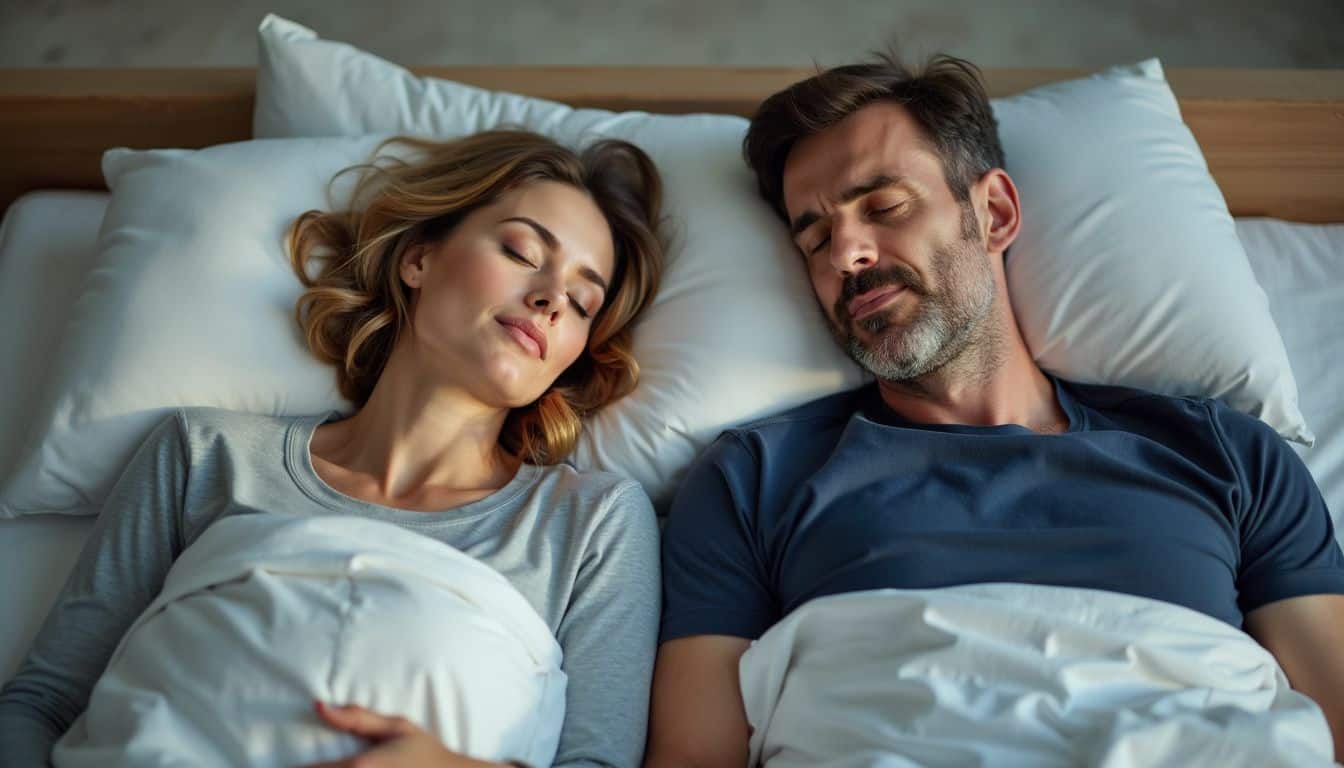
Sleeping right can make a world of difference for your achy back. Let’s dive into some comfy positions that’ll have you snoozing pain-free in no time.
Side Sleeping with a Pillow Between Knees
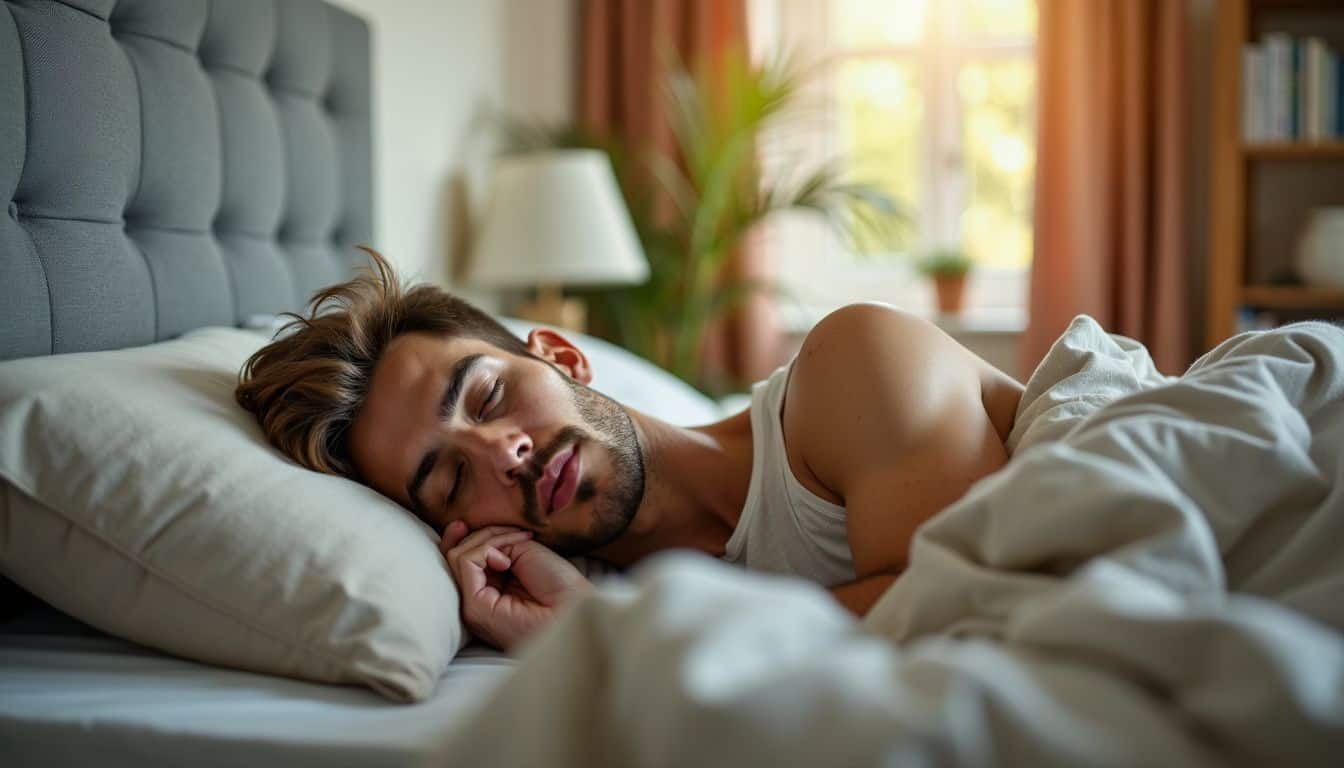
Side sleeping is a game-changer for lower back pain sufferers. It’s like giving your spine a cozy hug! Pop a pillow between your knees, and you’re golden. This simple trick keeps your hips, pelvis, and spine in line – bye-bye, pain! 6 I’ve tried it myself, and let me tell you, it’s a total lifesaver.
But wait, there’s more! Partial knee bends while side sleeping? Oh yeah, that’s the sweet spot. It takes the pressure off your lower back and feels oh-so-good. And ladies, don’t forget to upgrade your mattress and pillow game.
Trust me, your back will thank you in the morning. No more waking up feeling like you’ve been hit by a truck! 5
Side sleeping with a pillow between the knees is like giving your spine a VIP pass to comfort town.
Back Sleeping with a Pillow Under Knees

Shifting gears from side sleeping, let’s talk about another comfy position. Back sleeping with a pillow under your knees is a game-changer for lower back pain. It’s like giving your spine a mini-vacation.
This position helps keep your back in a neutral spot, taking pressure off those achy areas. 7
Here’s the scoop: pop a pillow under your knees when you’re on your back. It spreads your weight out evenly, so no part of your back takes too much heat. Your spine stays in line, and those muscles can finally relax.
I’ve tried this myself, and let me tell you – it’s like magic for those nights when my back is acting up. Plus, it’s super easy to do. Just grab an extra pillow, and you’re good to go.
No fancy equipment needed!
Benefits of Sleeping in a Reclined Position

Sleeping in a reclined position can be a real game-changer for your back health. This comfy pose takes the load off your spine, giving it a much-needed break. It’s like a mini-vacation for your vertebrae! The magic happens when you create an angle between your hips and thighs.
This slight tilt spreads out the pressure that usually builds up in your lower back. Many folks find relief from their aches by using reclining chairs or adjustable beds. 7
But that’s not all! Reclining can also help with other sleep issues. It may ease breathing troubles and reduce snoring. It’s also a top choice for pregnant women who need extra comfort.
Just keep in mind, finding the right angle is important. Too flat won’t help, and too upright might make you slide down. Play around until you find that sweet spot where your back feels great.
Now, let’s check out some positions you should avoid for a pain-free night. 8
Positions to Avoid for Lower Back Pain Relief
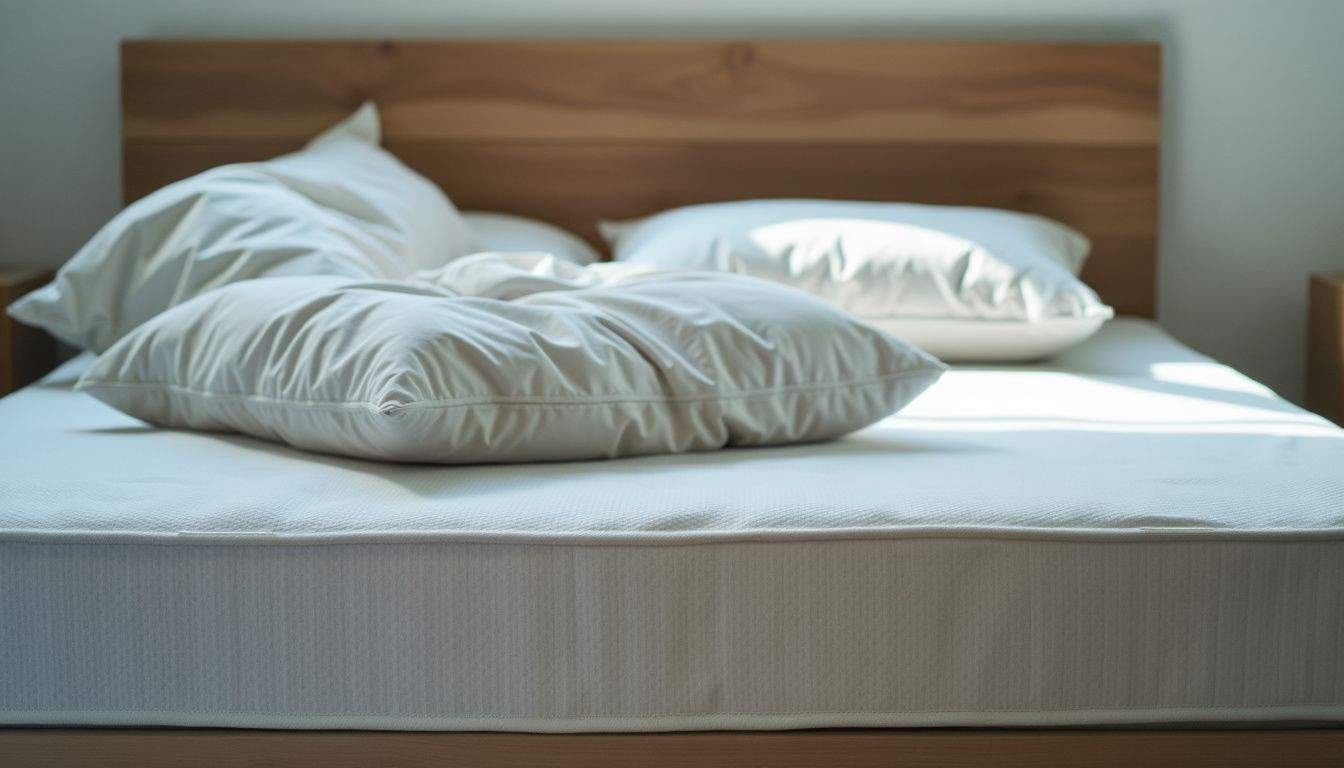
Sleeping on your tummy? Big no-no for your lower back! It’s like asking for trouble… Want to know why? Keep reading – we’ve got the scoop on what positions to dodge for a pain-free night’s sleep.
Why Stomach Sleeping Can Worsen Back Pain
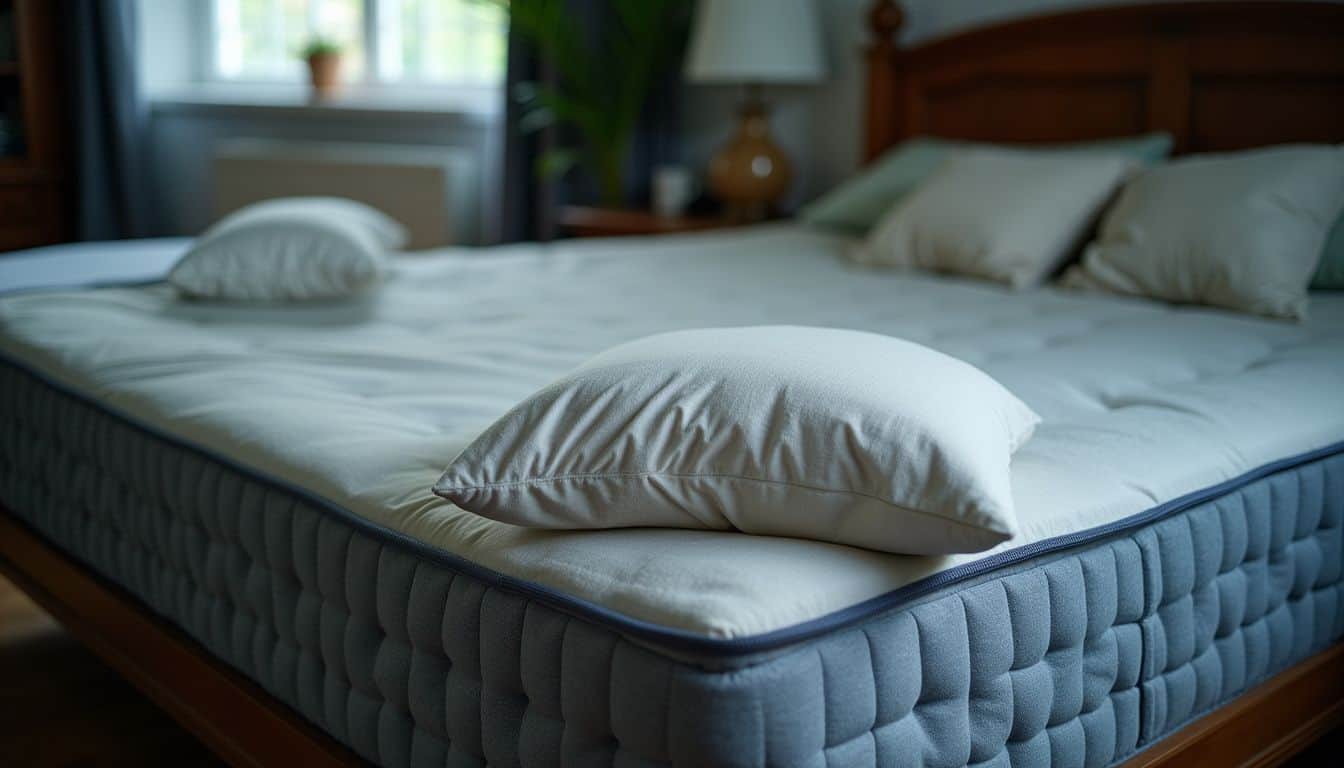
Stomach sleeping is a big no-no for your back. It puts a ton of stress on your spine. 9 Your neck twists in weird ways, too. This odd position can make your lower back hurt even more.
It’s like trying to bend a straw the wrong way – it just doesn’t feel right.
Flipping onto your tummy might seem comfy, but it’s not doing you any favors. Your back needs support, not squishing. Think of your spine as a delicate flower. You wouldn’t step on it, would you? Same goes for sleeping.
Give your back the TLC it needs by avoiding this position. Your body will thank you in the morning.
Your spine is the pillar of your health. Treat it with care, especially when you sleep. – Dr. Jane Smith, Physical Therapist
Choosing the Right Mattress and Pillow for Back Support
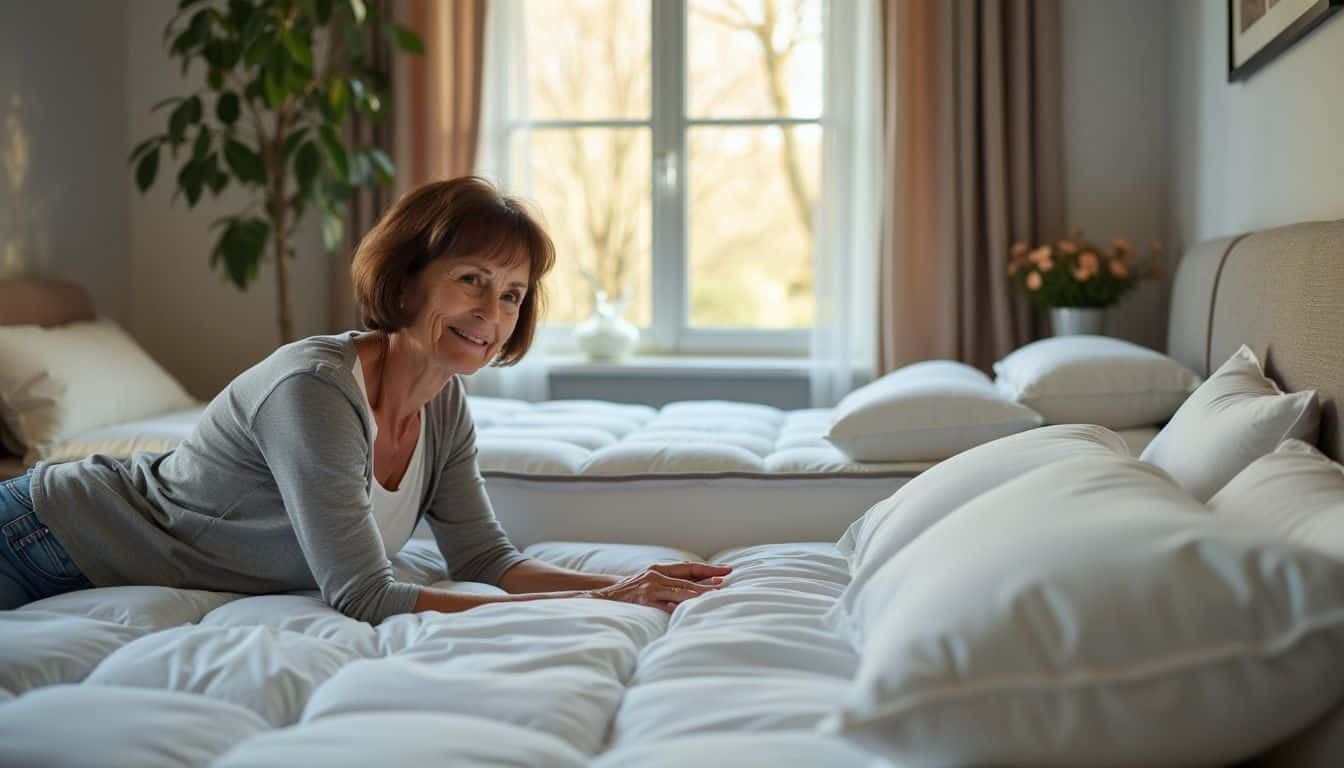
Your bed can make or break your back health. A good mattress and pillow combo is key to easing those pesky lower back aches.
Key Features to Look for in a Mattress
Picking the right mattress can make or break your sleep quality. Here are the key features you should look for when shopping for a new bed:
- Support and pressure relief: Your mattress should cradle your body just right. It needs to support your spine while easing pressure on your hips and shoulders. 10
- Firmness options: Different people need different firmness levels. Check out brands that offer various options to match your sleep style. 10
- Trial period: Many top brands now offer sleep trials. These let you test the mattress at home for 100 nights or more – a great way to ensure you love your new bed.
- Durability: A good mattress should last 7-10 years. Check reviews to see how well the mattress holds up over time.
- Motion isolation: If you share your bed, this feature is a must. It stops movement on one side from disturbing the other sleeper.
- Value for money: More expensive doesn’t always mean better. Find a mattress that fits your budget and gets good customer feedback.
- Materials: Memory foam, innerspring, latex – each has pros and cons. Pick one that suits your needs and preferences. 11
- Temperature control: No one likes waking up in a sweat. Some mattresses have cooling tech to keep you comfy all night.
- Edge support: This feature lets you use the whole mattress surface without feeling like you might roll off.
- Warranty: A long warranty shows the maker stands behind their product. It can also save you money if something goes wrong.
You can often get a free mattress to review if you’re a blogger or influencer. This can be a great way to test different options before buying.
Selecting the Right Pillow for Lower Back Support
Now that we’ve covered mattress features, let’s talk pillows. Your pillow plays a big role in back support too. Here’s how to pick the right one:
- Know your sleep style: Side sleepers need a higher loft pillow. Back sleepers do best with medium loft. Stomach sleepers should use a low loft pillow. 12
- Check for adjustability: The TEMPUR-Cloud Adjustable Pillow lets you change the filling. This helps you find your perfect support level. 12
- Look for cooling features: The Luxome LAYR pillow has layers that keep you cool. This can help you sleep better if back pain makes you hot.
- Consider memory foam: It molds to your head and neck. This gives good support for your spine.
- Try different shapes: Some pillows have curves to fit your neck. These can help keep your spine lined up.
- Don’t forget body pillows: They’re great for side sleepers. Put one between your knees to help your hips and lower back.
- Test it out: Many pillows come with long trial periods. The Brooklinen Marlow Pillow gives you 365 nights to try it.
- Think about your pain spots: If your lower back hurts, you might need extra support there. Look for pillows made for back pain. 13
- Ask a pro: A physical therapist can suggest pillows that fit your needs. They know how to help with spinal alignment.
- Replace often: Old pillows lose their support. Switch them out every 1-2 years to keep your back happy.
Additional Strategies to Reduce Lower Back Pain While Sleeping
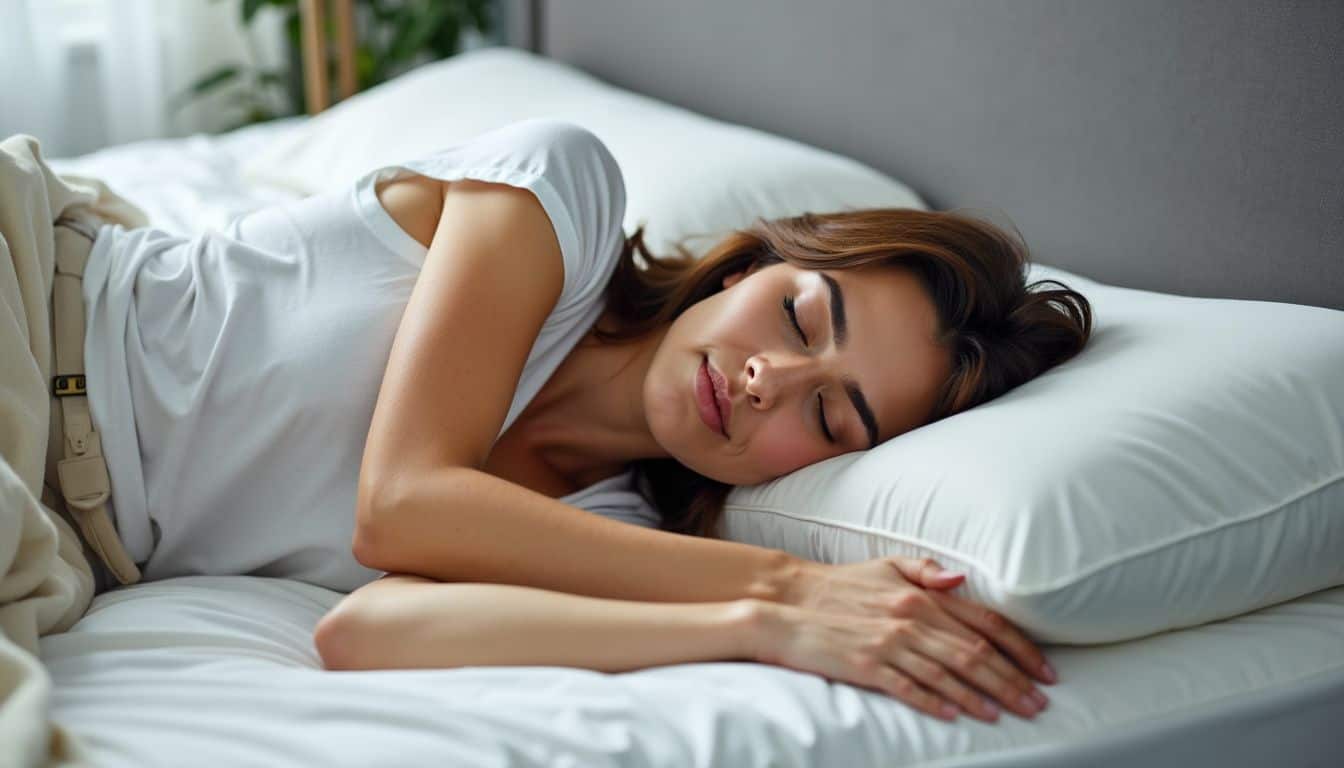
Sleep doesn’t have to be a pain in the back. There’s more you can do to ease those aches while you snooze. Let’s dive into some extra tricks to help you wake up feeling refreshed, not wrecked.
Adjusting Sleep Positions for Comfort
Finding the right sleep position can be a game-changer for your back. Toss and turn no more, ladies! Your body knows best, so listen to it. Start on your side with a pillow between your knees.
This keeps your spine aligned and eases pressure. Not comfy? Try your back with a pillow under your knees. It supports your lower back’s natural curve. Still not right? Go for a slight recline.
Use pillows to prop yourself up a bit. This takes stress off your spine and can feel heavenly. 14
Don’t settle for so-so comfort. Keep tweaking until you find your sweet spot. Your perfect position might change night to night. That’s okay! The goal is to wake up feeling good, not stiff and sore.
A medium-firm mattress often works best for most backs. But everyone’s different. Trust your body’s signals. Now, let’s talk about some pre-sleep moves to help your back relax….
Pre-sleep Mobility Routines for Back Relief
Once you’ve found a comfy sleep position, it’s time to prep your body for rest. A quick stretch before bed can work wonders for your back. 15 Try some easy moves like pelvic tilts or knee-to-chest hugs.
These simple stretches can help loosen tight muscles and ease pain.
Don’t forget about heat therapy! A warm pad on your lower back for 15–20 minutes can relax those achy muscles. For extra support, roll up a kitchen towel and place it in the curve of your spine while you lie down.
These small tricks can make a big difference in how you feel when you wake up. If pain keeps bugging you at night, chat with your doctor. 16 They might suggest more ways to help you catch those Z’s pain-free.
People Also Ask
How can I sleep better with lower back pain?
Try sleeping on your side in a fetal position with a pillow between your knees. This helps keep your spine aligned. A foam mattress might also help. If you’re a back sleeper, put a pillow under your knees to maintain the natural curve of your spine.
What’s the link between sleep and back pain?
It’s a vicious cycle. Poor sleep can make back pain worse, and back pain can lead to sleep problems. Lack of shut-eye can increase pain sensitivity. Good sleep hygiene, like sticking to a regular bedtime and avoiding caffeine, can help break this cycle.
Should I see a doctor for my lower back pain?
If your back pain doesn’t improve with home remedies, or if you have weakness or numbness, it’s time to see a doc. A physical therapist or physiatrist can help diagnose the issue and create a treatment plan. They might suggest exercises or other therapies to ease your discomfort.
Can exercise help with nighttime back pain?
You bet! Regular physical activity can strengthen your back muscles and improve flexibility. But don’t overdo it. Start slow with gentle stretches or walking. Always chat with your doctor before starting a new exercise routine, especially if you have chronic pain.
Are there any lifestyle changes that can help my back pain at night?
Absolutely! Maintaining a healthy weight, eating a balanced diet, and managing stress can all help. Try relaxation techniques like deep breathing or meditation before bed. Also, watch your posture during the day – it affects how your back feels at night.
What if I have a herniated disc? How should I sleep?
With a herniated disc, sleeping on your stomach is a no-go. It puts extra stress on your spine. Instead, try sleeping on your back with a pillow under your knees, or on your side with a pillow between your knees. If pain persists, talk to your doctor about other options.
References
^ https://www.ncbi.nlm.nih.gov/pmc/articles/PMC10548303/
^ https://www.ncbi.nlm.nih.gov/books/NBK538173/
^ https://www.ncbi.nlm.nih.gov/pmc/articles/PMC4402739/
^ https://www.ncbi.nlm.nih.gov/books/NBK560878/
^ https://www.ncoa.org/adviser/sleep/sleeping-positions/ (2024-06-13)
^ https://casper.com/blog/best-and-worst-sleeping-position-for-lower-back-pain/?srsltid=AfmBOoqmQa6zb02VGu_iyTDVg5JskkPrvrv52arcln1EAJqTtTpH-evL (2024-08-28)
^ https://redefinehealthcare.com/top-5-sleeping-positions-for-back-pain/
^ https://www.mayoclinic.org/diseases-conditions/back-pain/in-depth/sleeping-positions/art-20546852
^ https://casper.com/blog/best-and-worst-sleeping-position-for-lower-back-pain/?srsltid=AfmBOooHrjLMu2ML7kFSPQJyqrODvS4KUS80fKjf_casdY7Bcl3xDu6a (2024-08-28)
^ https://www.sleepfoundation.org/best-mattress/best-mattress-for-back-pain
^ https://www.consumerreports.org/home-garden/mattresses/buying-guide/
^ https://www.ncoa.org/adviser/sleep/best-pillow-for-back-pain/
^ https://www.amazon.com/Support-Cooling-Sleeping-Cushion-Sleepers/dp/B099DZZJCW
^ https://casper.com/blog/best-and-worst-sleeping-position-for-lower-back-pain/?srsltid=AfmBOoq4q91MfDVj3uW5PpBONSF5IQZjWba1pDSjkTmhJrhVrkoIwAIO (2024-08-28)
^ https://www.revisionhealthservices.com/blog/stretches-for-lower-back-pain-in-bed
^ https://www.sleepfoundation.org/physical-health/how-to-sleep-with-lower-back-pain (2024-04-10)
